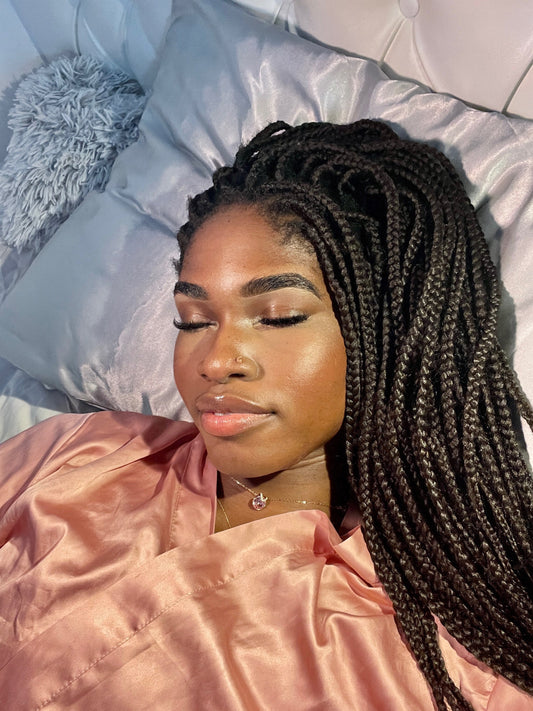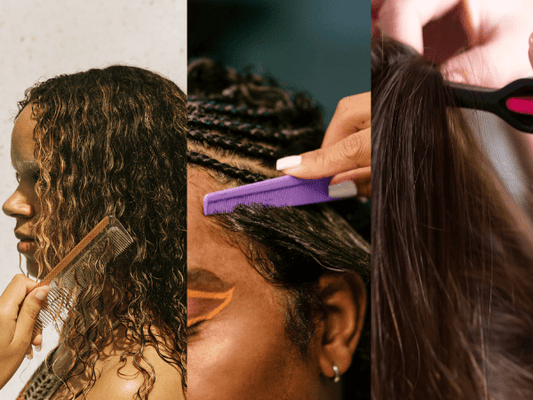Understanding the Damage
Before diving into repair strategies, it's crucial to understand what constitutes damage in curly hair. Common signs include split ends, excessive frizz, lack of definition, dryness, and breakage. These symptoms often result from compromised hair cuticles, the outermost layer of the hair shaft, which, when healthy, lie flat, protecting the inner layers of the hair.
Hydration is Key
The cornerstone of repairing damaged curls is hydration. Curls thrive on moisture, and replenishing lost hydration can significantly improve hair health.
-
Deep Conditioning: Implement a regular deep conditioning routine, using products rich in emollients, humectants, and nutrients. Look for ingredients like shea butter, glycerin, and natural oils. Deep condition at least once a week, letting the product sit for 30 minutes to an hour under a shower cap or heat cap for enhanced penetration.
-
Leave-In Conditioners: Incorporate a daily leave-in conditioner to maintain moisture levels. Choose lightweight formulas that won't weigh down your curls but provide lasting hydration throughout the day.
Rebuilding with Protein
While moisture is crucial, protein treatments are equally important for repairing damaged hair. Protein helps rebuild the hair's structure, particularly for curls that have lost their elasticity or strength.
-
Balanced Protein Treatments: Use protein treatments sparingly, as overuse can lead to stiffness and breakage. Start with once a month and adjust based on your hair's response. Ingredients like hydrolyzed wheat protein and keratin can help reinforce the hair's structure.
-
DIY Protein Masks: For a natural alternative, homemade masks using ingredients like eggs, mayonnaise, or yogurt can provide a mild protein boost to your curls.
Trimming Split Ends
Regular trims are essential for maintaining the health of your curls. Split ends can travel up the hair shaft if left unattended, causing further damage. A trim every 3-4 months can help keep your ends fresh and prevent the propagation of damage.
Gentle Detangling
Detangling is a critical step in the care of curly hair, more so when dealing with damage.
-
Use a Wide-Tooth Comb: Start detangling from the ends, working your way up to the roots gently. Always detangle when your hair is wet and conditioned to minimize breakage.
-
Finger Detangling: Alternatively, using your fingers to gently separate knots allows for more careful handling of fragile strands.
Minimizing Heat and Chemical Exposure
-
Limit Heat Styling: Heat can exacerbate damage, so limit the use of heat styling tools and always use a heat protectant when you do.
-
Avoid Harsh Chemicals: Chemical treatments, including dyes and relaxers, can further damage your curls. Opt for natural or less harsh alternatives, and give your hair a break from processing when possible.
Protective Styling
Protective styles, like braids, twists, and updos, can help reduce manipulation and exposure to environmental stressors, giving your hair a chance to recover.
- Avoid Tight Styles: Ensure protective styles are not too tight, as excessive tension can lead to breakage, particularly at the hairline.
Embracing a Healthy Lifestyle
Your hair's health is a reflection of your overall well-being. A balanced diet rich in vitamins and minerals, adequate hydration, and managing stress can all contribute to healthier curls.
-
Nutrient-Rich Diet: Focus on foods high in omega-3 fatty acids, antioxidants, zinc, and vitamins A, C, and E to support hair health.
-
Stay Hydrated: Drinking enough water is essential for maintaining moisture levels in your hair.
Conclusion
Repairing damaged curls is a journey that requires patience, consistency, and a gentle approach. By focusing on hydration, incorporating protein treatments judiciously, trimming regularly, and adopting gentle handling and protective styling, you can gradually restore your curls' health and vitality. Remember, the goal is not just to repair damage but to establish a care routine that prevents future damage, allowing your curls to thrive in their natural beauty.











